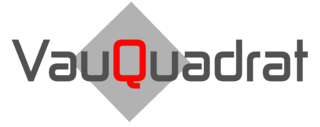Agricultural technology
Deep induction in agricultural engineering – never heard of it!
Of course not. Although the predecessors of the VauQuadrat V3/V4 have been around for over 20 years and the current generation has been on the market since 2019, hardly anyone in the agricultural machinery sector has noticed. But that’s hardly surprising given the distribution channels used to date. Without the report in the ‘Eilbote’ in November 2010, it would probably have stayed that way!
What is it all about: generating A LOT of heat quickly IN the steel. And without the damaging side effects of the flame. So that you can do things faster and more gently that you could do with a flame, for example heat up nuts quickly – and then do much more.
For example: loosening screws that are stiff or rusted and where you can only reach the head. Unusual, because it’s the other way around! But guaranteed to work. The animated graphic shows why. If you heat a little longer, the jammed part can be much deeper in the material.
Application: Press-fit bearings
How about loosening pressed-in components:
 Here, the bearing shell of the defective bearing can be made to glow completely, while the pin is exposed to much lower temperatures. The bearing shell expands as a result and comes off without any problems.
Here, the bearing shell of the defective bearing can be made to glow completely, while the pin is exposed to much lower temperatures. The bearing shell expands as a result and comes off without any problems.
Bending – but also straightening – and even forging!
Three times the same goal: to change the shape of large steel structures. The picture on the left shows a case in which a bent component is heated along the bending edge into the plastic range and then straightened by applying force. The 12 mm thick material is red-hot throughout within less than a minute. There is no structural damage due to the lack of flame (unless you quench afterwards…).
 The picture on the right shows how the craft of flame straightening, i.e. bending without external forces by preventing thermal expansion, can be made much faster and gentler on the material using induction. Keyword ‘induction straightening’. The same ‘straightening figures’ (point, wedge, line, …) are used as learned in the flame straightening course. The big difference is that significantly lower final temperatures are required, which means that it is much faster than with a flame at a comparable heat output.
The picture on the right shows how the craft of flame straightening, i.e. bending without external forces by preventing thermal expansion, can be made much faster and gentler on the material using induction. Keyword ‘induction straightening’. The same ‘straightening figures’ (point, wedge, line, …) are used as learned in the flame straightening course. The big difference is that significantly lower final temperatures are required, which means that it is much faster than with a flame at a comparable heat output.
Loosen glued screw connections
There are two approaches here: With a lot of heat from the inside, as shown in the clutch head on the left, or with dosed heat from the outside – hydraulic cylinder application.
The adjustable power reduction is a particular advantage here.
Beautiful use cases
A broken screw that has rusted tight. Normally no chance without drilling out! With induction: Heat for one minute, then leave to cool, simply unscrew with the grip pliers.

